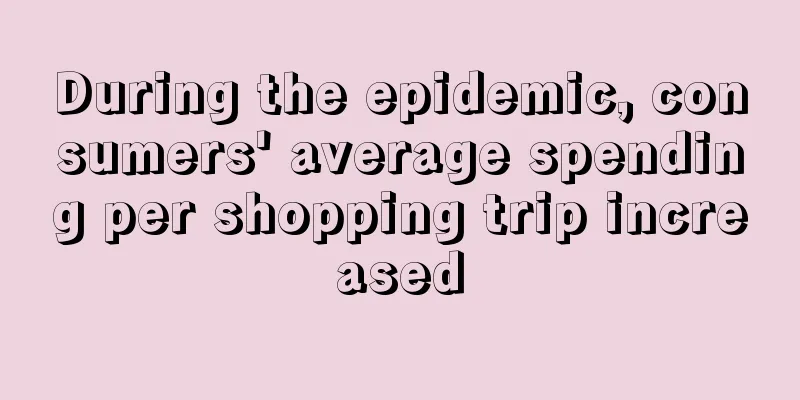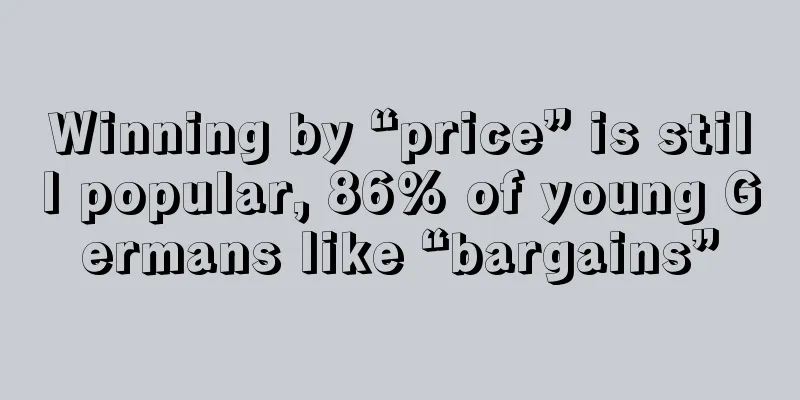During the epidemic, consumers' average spending per shopping trip increased

|
Studies have shown that during the COVID-19 pandemic, the average spending of American consumers on each purchase has increased, whether in offline stores or online shopping websites .
According to the latest data from the NPD Group , the amount of each consumer order has increased significantly after the COVID-19 pandemic. Since reaching an average of $34 per order in March 2020 , the average monthly shopping amount in the following 12 months has been 13% to 29% higher than the same month last year . After March 2021, the average spending amount has maintained a relatively stable growth.
The increase in the amount paid per order is caused by a change in consumer shopping habits. It is reported that the number of weekly shopping trips by consumers during the epidemic is lower than the level in 2019, but the amount of spending is higher than in 2019, which shows that consumers buy more goods in each shopping trip. This is inseparable from the "stockpiling" phenomenon that occurred during the epidemic. In order to ensure normal life during the epidemic, consumers bought a large number of items in each shopping trip.
In addition, the increase in product prices is also the reason for the increase in consumer spending on each purchase. During the epidemic, many stores were out of stock due to the global supply chain crisis and worker shortages. In order to alleviate this phenomenon, retailers have to spend more to recruit workers and transport goods, and these cost increases will eventually be passed on to product prices.
Grocery stores , drug stores, hardware stores and farm stores have seen the strongest growth in consumer spending per trip . As of July this year , consumers in these stores have spent at least 20% more per trip on average than in 2019, both offline and online . Online-only retailers have seen even more significant gains, with visits increasing by 49% compared to 2019.
Marshall Cohen, chief industry consultant for retail , said: " Due to epidemic control measures, consumers have reduced the number of offline purchases , coupled with the supply chain crisis that has led to product shortages from time to time , which has reduced consumers' price sensitivity and means that consumers are now willing to spend more to buy the products they need. "
Consumers' shopping habits are affected by evolving lifestyles. It is expected that consumers will spend more money on higher-quality products during the holiday shopping season . Product shortages caused by supply chain crises still exist, and sellers must prepare early for the upcoming holiday shopping season. Consumption habits Shopping expenses |
>>: U.S. package volume grew 37% to 20 billion in 2020
Recommend
With over 10 million users, Karrot becomes the fastest growing second-hand trading app in Korea
Under the " influence " of the COVID-19...
Another strict investigation! A large number of seller accounts have been suspended
Soon after the beginning of the year, Amazon laun...
eBay has another weird auction: a cookie was sold for 8,000 pounds
Can you imagine how much foreigners love sweets? ...
What is Dealspotr? Dealspotr Review, Features
Dealspotr is a relatively small discount website i...
What is Advcash? Advcash Review, Features
<span data-docs-delta="[[20,{"gallery"...
What is Bonda Supply Chain? Bonda Supply Chain Review, Features
Bonda Supply Chain ( Guangzhou Bonda Supply Chain...
What is Magnit? Magnit Review, Features
Founded in 1994 in Krasnodar, southern Russia, Ma...
Online shopping sales in the United States rebounded in December, with travel-related spending being the highest!
2021 has just passed, and many consumers in the U...
What is Velotrade? Velotrade Review, Features
Velotrade operates a digital trade finance platfor...
What is ericprom? ericprom Review, Features
Ericprom is committed to providing better customer...
What is Shopee Preferred Seller? Shopee Preferred Seller Review, Features
Shopee Preferred Sellers are screened by Shopee an...
Shopee 12.12 Birthday Sale Launched, Following Digital Trends to Stimulate Online Consumption
December 8, 2022, China - Recently, the leading e...
Too arrogant! Temu buyers claim to be able to make sellers return to the pre-liberation era overnight
For many Temu sellers, the people they communicat...
Practical tips | Seven tips for gaining followers on TikTok
Recently, Influencer Marketing Hub shared some ti...
Shipping prices rise again, Matson's Q3 revenue will exceed 350 million!
Before the National Day, the price of Matson fell...









